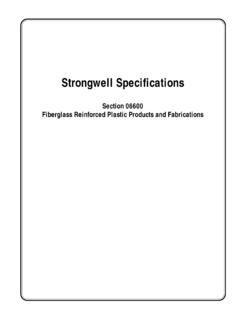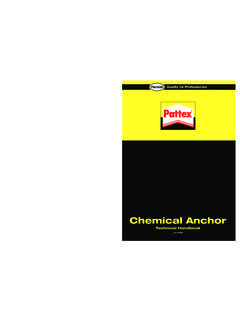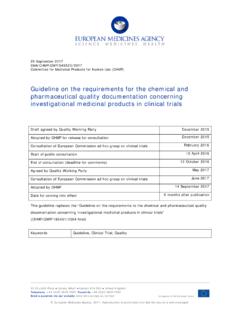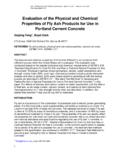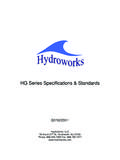Transcription of STEVIOL GLYCOSIDES Chemical and Technical …
1 STEVIOL GLYCOSIDES (CTA) 2007 - Page 1( 7) STEVIOL GLYCOSIDES Chemical and Technical Assessment Revised by Harriet Wallin for the 69th JECFA (Original prepared by Harriet Wallin for the 63rd JECFA, revised by Paul M. Kuznesof, , for the 68th JECFA) 1. Summary The crushed leaves of the stevia plant, Stevia rebaudiana (Bertoni) are extracted with hot water and the additive is recovered from the aqueous extract using only alcohols and ion-exchange resins for the isolation and purification of the desired product. The commercial material contains at least 95% of total (seven) STEVIOL GLYCOSIDES (dried basis).
2 Stevioside and rebaudioside A are the component GLYCOSIDES of principle of interest because of their sweetening property. The newly revised specifications cover a range of compositions that include product of at least 95% stevioside or at least 95% rebaudioside A. STEVIOL glycoside preparations are white to light yellow powders that are freely soluble in water and ethanol. The powders can be odourless or have a slight characteristic odour. Water solutions are 200 to 300 times sweeter than sucrose. On the basis of results from thermal and hydrolytic stability studies on STEVIOL GLYCOSIDES and consideration of several summaries from the literature on the stability of stevioside and rebaudioside A, the 68th JECFA agreed that STEVIOL GLYCOSIDES is sufficiently thermally and hydrolytically stable for use in foods, including acidic beverages, under normal conditions of processing and storage.
3 Preparations of STEVIOL GLYCOSIDES are reported to be used principally as sweeteners in fruit and milk-based drinks, desserts, yoghurts, confectionaries, delicacies, and pickles. The use of a stevia extract as a table-top sweetener is well known. 2. Introduction Water extracts of the crushed leaves of the stevia plant, the perennial shrub Stevia rebaudiana (Bertoni) Bertoni of the family Asteraceae (Compositae), have been used for many years as a sweetener in South American and Asian countries. These substances currently are not permitted as conventional food ingredients or additives with a sweetener function in the United States nor have they yet been deemed acceptable for such use in the European Union.
4 However, the leaves of the stevia plant or extracts have been legally marketed in the United States as dietary ingredients in dietary supplements. Stevia extracts generally contain a high percentage of the GLYCOSIDES of the diterpene STEVIOL . Stevioside and rebaudioside A are the principal sweetening compounds and are generally accompanied by smaller amounts of other STEVIOL GLYCOSIDES . Based on the data and information received by the 63rd JECFA (2004), the Committee assigned a temporary ADI of 0-2 mg/kg bodyweight (bw) (expressed as STEVIOL ) for STEVIOL GLYCOSIDES and established tentative specifications.
5 The temporary ADI and specifications related solely to material containing not less than 95% glycosylated derivatives of STEVIOL , which, in addition to stevioside and rebaudioside A (summed content to be not less than 70% of total STEVIOL GLYCOSIDES ), included rebaudioside C and dulcoside A, as well as minor amounts of rubusoside, steviolbioside, and rebaudiosides B, D, E, and F. STEVIOL GLYCOSIDES (CTA) 2007 - Page 2( 7) In order to remove the temporary designation from the ADI and the tentative designation from the specifications, the Committee required additional information on certain pharmacological effects in humans and analytical data on and a method of analysis for those STEVIOL GLYCOSIDES not identified in the specifications.
6 Further, the Committee requested information on the composition of the non- STEVIOL glycoside fraction, on quantities of residual solvents from the manufacturing process, on hydrolytic stability of the additive in acidic foods and beverages. At the 68th JECFA, the Committee reviewed responses addressing the outstanding issues from the 63rd JECFA. Although the Committee maintained the temporary ADI of 0-2 mg/kg bw (expressed as STEVIOL ), the tentative designation for the specifications were removed and full specifications were prepared. 3. Structures of STEVIOL GLYCOSIDES The structures and Chemical Abstracts Service registry numbers for STEVIOL and its GLYCOSIDES that are the main sweetening agents of the additive STEVIOL GLYCOSIDES are given in Figure 1.
7 Compound name No. R1 R2 1 STEVIOL 471-80-7 H H 2 Steviolbioside 41093-60-1 H -Glc- -Glc(2 1) 3 Stevioside 57817-89-7 -Glc -Glc- -Glc(2 1) 4 Rebaudioside A 58543-16-1 -Glc -Glc- -Glc(2 1) -Glc(3 1) 5 Rebaudioside B 58543-17-2 H -Glc- -Glc(2 1) -Glc(3 1) 6 Rebaudioside C (dulcoside B) 63550-99-2 -Glc -Glc- -Rha(2 1) -Glc(3 1) 7 Rebaudioside D 63279-13-0 -Glc- -Glc(2 1) -Glc- -Glc(2 1) -Glc(3 1) 8 Rebaudioside E 63279-14-1 -Glc- -Glc(2 1) -Glc- -Glc(2 1) 9 Rebaudioside F 438045-89-7 -Glc -Glc- -Xyl(2 1) -Glc(3 1) 10 Rubusoside 63849-39-4 -Glc -Glc 11 dulcoside A 64432-06-0 -Glc -Glc- -Rha(2 1) CH2CH3 COO-R1CH3O-R2 STEVIOL GLYCOSIDES (CTA) 2007 - Page 3( 7) Figure 1.
8 Structures of STEVIOL and related GLYCOSIDES . Glc, Xyl, and Rha represent, respectively, glucose, xylose, and rhamnose sugar moieties. 4. Description STEVIOL glycoside preparations are white to light yellow powders that are freely soluble in water. The powders can be odourless or have a slight characteristic odour. Water solutions are 200 to 300 times sweeter than sucrose. 5. Manufacture of STEVIOL GLYCOSIDES The basic raw materials for manufacturing STEVIOL glycoside preparations are the crushed leaves of the perennial shrub Stevia rebaudiana (Bertoni) Bertoni of the family steraceae (Compositae).
9 Conventional extraction processes to obtain STEVIOL glycoside-containing extracts that are described in the literature follow similar methodologies: Stevia leaves are extracted with hot water. In some cases, the leaves are pretreated with non-polar solvents, such as chloroform or hexane to remove essential oils, lipids, chlorophyll, and other non-polar substances. The extract is clarified by precipitation with salt or alkaline solutions, concentrated, and re-dissolved in methanol or aqueous ethanol for crystallization of the GLYCOSIDES . Additionally, reports of the use of supercritical fluid extraction (SCFE) using carbon dioxide to ultimately obtain product have appeared in the literature.
10 The product is obtained from the leaves of Stevia rebaudiana Bertoni. The specified additive, however, following hot-water extraction of crushed stevia leaves, is obtained from the aqueous extract using only methanol or aqueous ethanol and ion-exchange resins for the isolation and purification of the desired product. The commercial product may be recovered by spray-drying. The Committee, at its 68th and 69th meetings reviewed information on additional purification steps included in the manufacturing process of STEVIOL GLYCOSIDES considered by the 63rd JECFA. These steps included further recrystallization and separation steps; and the introduction of aqueous ethanol as a new solvent.










